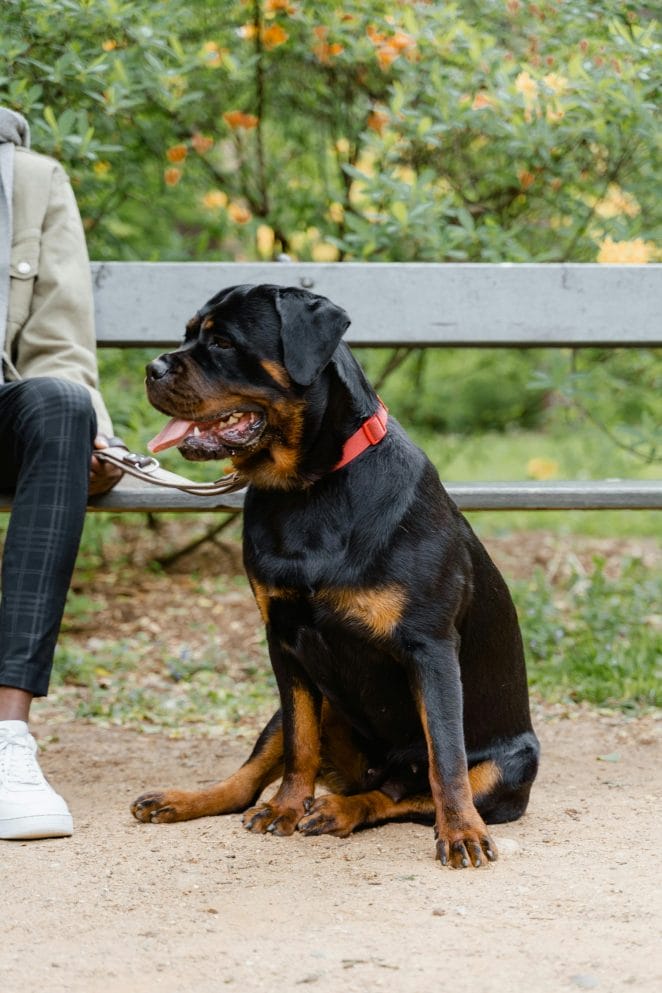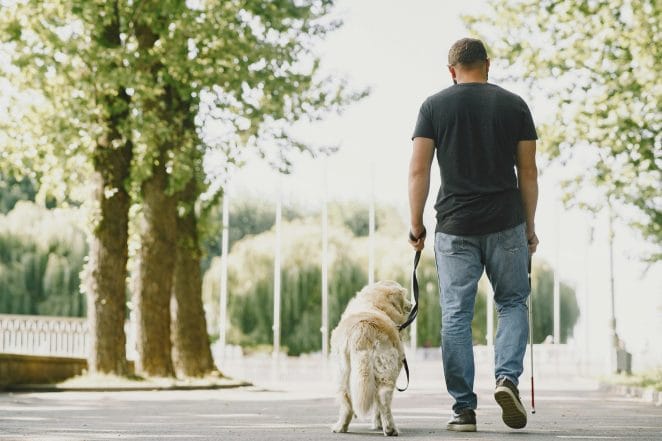
International Guide Dog Day is an annual celebration observed on the last Wednesday of April.
It commemorates the founding of the International Federation of Guide Dog Associations on April 26, 1989.
This day honors guide dogs’ contributions globally, raising awareness of their vital role in empowering individuals with visual impairments to live independently.
History of International Guide Dog Day
Guide dogs have a long history, dating back to 79 AD, as depicted in paintings found in Pompeii, Italy, showing dogs assisting the blind.
They used them in various countries over the centuries, including ancient China and medieval Europe.
Despite their historical use, it wasn’t until the mid-1800s that legislation recognizing guide dogs began to emerge.
In 1838, the British Parliament exempted license fees for dogs used by shepherds and by the blind as guides, setting a precedent for supporting those who relied on dogs for assistance.
The training of guide dogs for the blind started in the early 1900s, leading to organizations like the Guide Dogs for the Blind Association in the UK in 1934.
These dogs played a pivotal role during WWII, particularly aiding veterans who lost their sight from chemical injuries.
Despite advancements, legal recognition for guide dogs didn’t occur until 2010 with the Americans with Disabilities Act (ADA), which established rules for people with disabilities who rely on guide dogs.
International Guide Dog Day, celebrated annually on the last Wednesday of April, recognizes the invaluable work of guide dogs for individuals with visual impairments.
These dogs possess various skills, including guiding their handlers, assisting with tasks, such as picking up dropped items, and providing emotional support.
Their exceptional abilities make them indispensable service animals for those in need.
5 Important Guide Dog Facts

Here are some interesting facts about guide dogs:
Labradors are the top choice
They favor Labradors for guide dog work due to their short coat, gentle nature, willingness to assist, and overall good health.
Numerous benefits
Research indicates that guide dogs enhance mobility, boost confidence, provide companionship, and promote social interaction for their handlers.
Popular names
Common names for guide dogs include Max, Charlie, and Buddy for males, and Bella, Lucy, and Daisy for females.
Intelligent companions
Guide dogs possess remarkable intelligence and can help their handlers navigate obstacles by assessing their size and shape to prevent accidents.
Respect their space
It’s important not to feed or pet a guide dog without permission, as it could distract the animal from its important work of assisting its handler.
How To Observe International Guide Dog Day?

Here are three ways to get involved with guide dogs:
Learn about training
Guide dogs undergo extensive training to ensure they can safely assist their handlers. They learn to recognize commands and assess situations to avoid putting their handlers in danger.
This training is complex and requires patience and skill.
Show support
Many organizations around the world train guide dogs and match them with individuals in need.
These non-profits rely on support from the community, whether through volunteering time or donating funds.
Your contributions can make a significant difference in the lives of both guide dogs and their handlers.
Adopt a “career change” dog
Not all dogs that begin guide dog training complete the program. These dogs, known as “career change” dogs, need forever homes.
However, there is often a long waiting list for adopting these dogs, so it’s crucial to submit your application early if you’re keen on offering a loving home to a dog that has served a noble purpose.
Frequently Asked Questions
A black Labrador named Honey is India’s first fully trained Assistance Dog.
Guide dogs are assistance dogs trained to lead blind or visually impaired individuals around obstacles.
Guide dogs assist blind or visually impaired individuals in navigating public transport, shopping centres, and buildings, and finding doors, seats, and pedestrian crossing buttons.
Guide dogs find fulfilment in their work and take pride in doing their job well. However, they don’t have opportunities for typical dog play during their workday.
Please refrain from touching, talking to, feeding, or otherwise distracting a guide dog while they are wearing their harness or vest. It’s important to allow the dog to focus on their duties for the safety of their handler.


GIPHY App Key not set. Please check settings